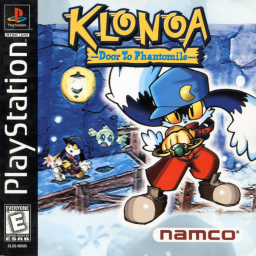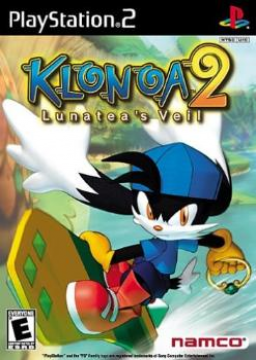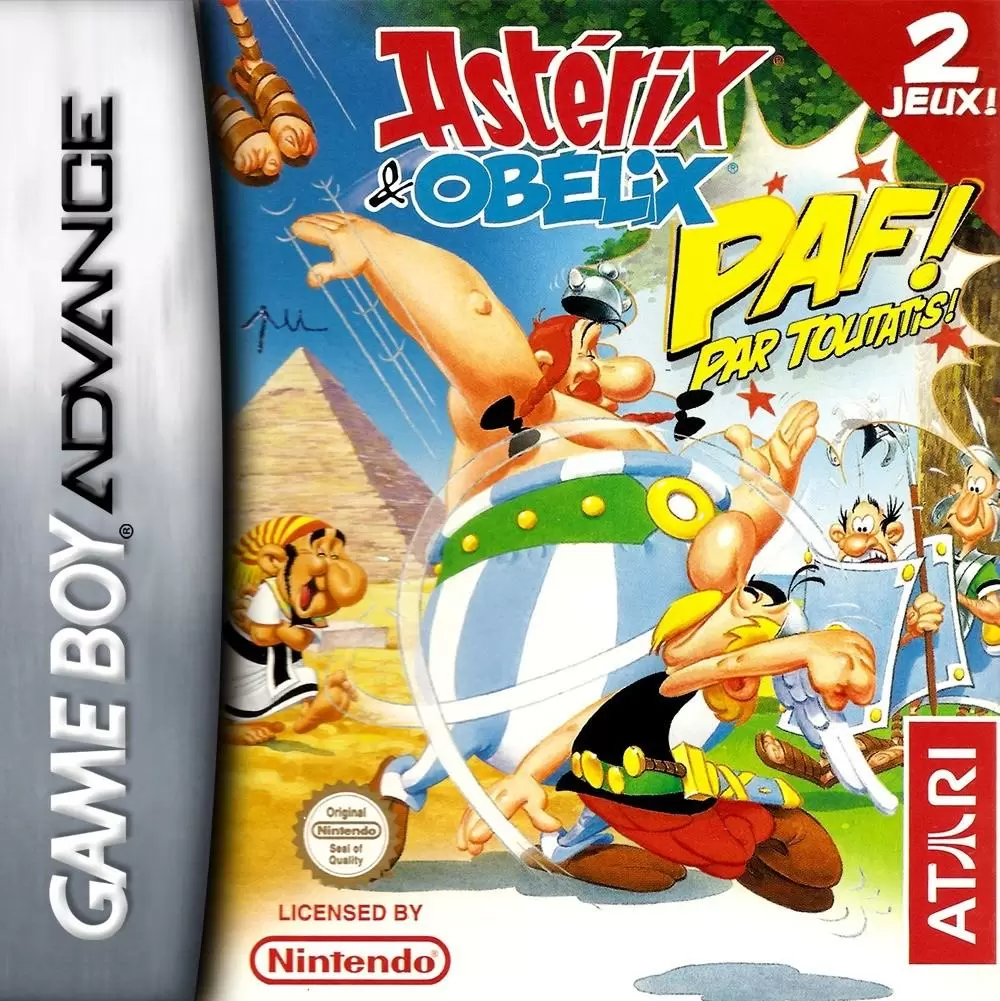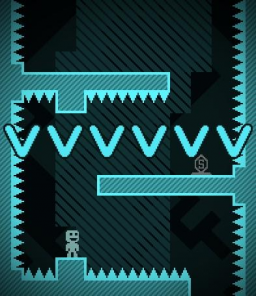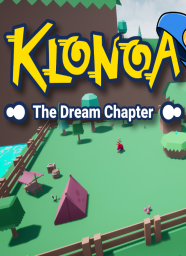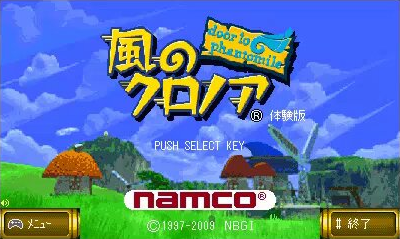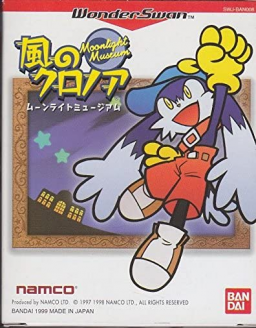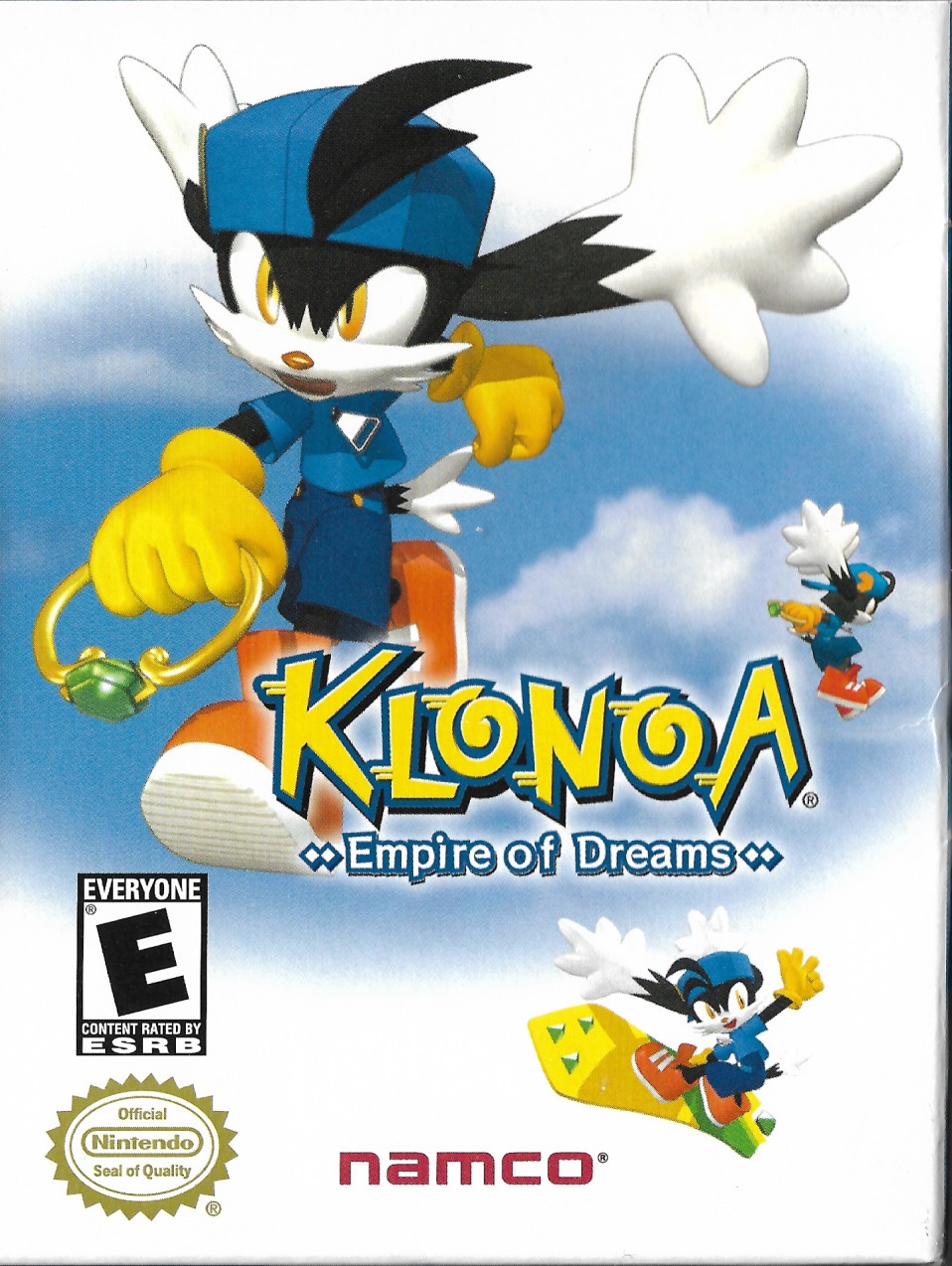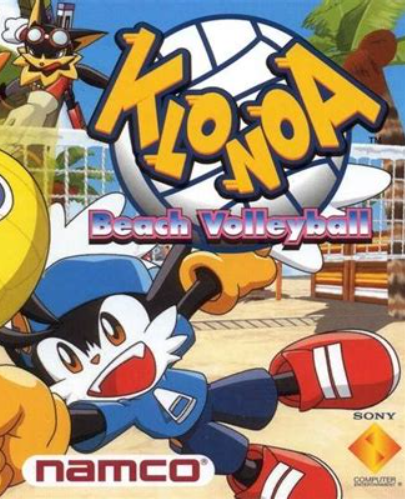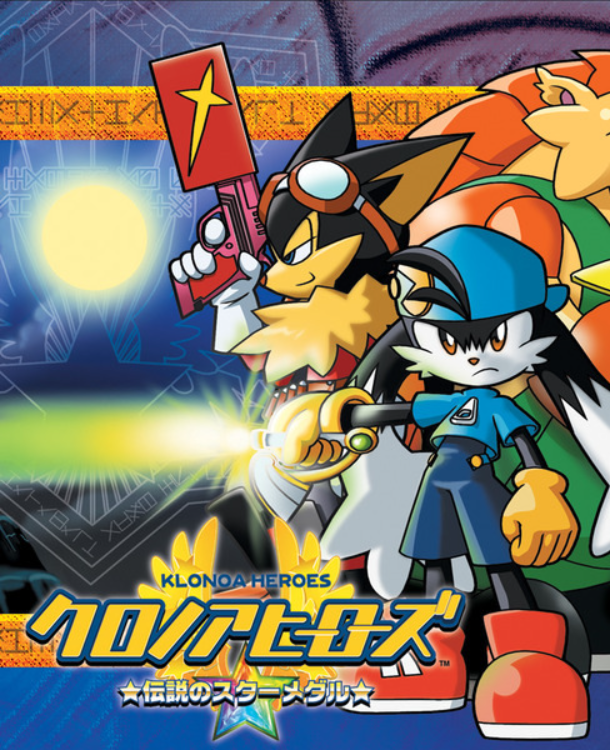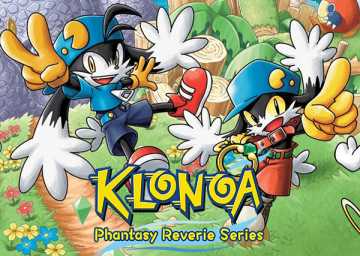[Three days with no further discussion (some of it was on Discord), so I went ahead and banned the aforementioned exploit] This is a simple forum post bringing light to new discoveries of the past couple weeks.
The first one is a previously unnoticed quirk about how the IGT works. And it only concerns L’sV. It pertains to IGT abuse gameplay. You see, pause warping is one of the techniques allowed in that difficulty category. As it stands, there are no evaluation of its IGT time-save advantages over every single checkpoints, compared to not warping at all and walking straight. Neither on the DtP remaster. So we have no data on how much time it saves overall. But it was thought that this technique could only be used on a very finite amount of checkpoints. That is because, pause warping on most checkpoints wouldn’t seem to save time, as you are put back further away than you previously were when you struck them (with a wind bullet) and pause warped.
But, as it turns out, the IGT system of L’sV behaves in such a way that this assumption may be abandoned. Indeed, it was found out that when you respawn/warp to a checkpoint, the IGT is stopped for a brief moment. You are, in fact, able to move for a little while, while the IGT doesn’t count time. The exact duration of this IGT timer pause, is very similar to that of the IGT freezing behavior, also discovered recently, at the start of most of the main stages (as discussed in the post of 6th February). It amounts to a dead time of roughly 0.4 seconds. Yes. Even the extra stages and their individual timers do this as well. It seems Kumohachi realized this and use it in order to save frames in his recent extra IGT abuse runs : https://www.speedrun.com/klonoaprs/run/z5e6x9ez
To make it obvious, this quirk allows to save time - albeit a very finite amount - with checkpoints that were previously thought to be slower with pause warping, on L’sV only. That’s pretty notable to me.
The second game quirk is small and also pertaining mostly to IGT abuse runs.
If you throw an enemy (unsure if it works with a bullet) at a checkpoint, but pause right before the collision occurs (might be frame-perfect), and proceed to pause warp after that, something strange happens. You will be sent back to the previous checkpoint/start of level… but the checkpoint you seem to not have struck… has disappeared now ? What’s more, if you pause warp after finding out the checkpoint has disappeared, you’re yet again sent back. A very strange bug that I’m not surprised we didn’t find on the original game. This isn’t fast at all obviously. You would want to avoid this and make absolutely sure the checkpoint was hit before pause warping. Else, you might as well reset the speedrun.
Last one concerns L’sV again, and must be the most important of all. It’s about key binding and the big spring jump tech. As such, PC, and consoles with customizable input system like the Switch are concerned.
You need to press both jump buttons at around the same time to perform a big bounce on springs. But it’s been found out that if you bind both buttons on a single key, big spring jumps will be flawlessly consistent. This is easily the most controversial feature PC players have access to that we’ve found (even if they’re not the only one to have access to it).
Before that point, the most useful thing PC runners could do, was bind a key for the support jump, on the same keyboard they use to play the run on, in order to avoid juggling two controllers at once (as a reminder, og PS2 runners do this). But it can be argued that this is acceptable. The support jump key binding for PC play of KPRS is reportedly a huge mess, so much so that they have no choice but to play that way. Secondly, the difference might be negligible in the end. Someone experienced won’t have issues pressing the support button on the second controller.
However, this is different, it is a straight up massive advantage over the platforms that can’t do this. If they all officially could, then we would gladly use this binding technique, but as far as we know...
And the problem is, we might not be able to fight against it. Even if we were to enforce keyboard/means of input overlays onto PC (etc) runs, someone ill-minded could very convincingly press both buttons and have them register as inputs on the overlay, while only one key could do the trick. There is no easy way to detect it. Although input displays are very handy, enforcing them on runners would do nothing but weight them even more.
So, until further update, all we can realistically do is not support this trick. As such, we may ban it from use indefinitely.
Before that is done though, I will leave things to rest for a couple days. Time for people to reply if felt needed.
Added three new Lunatea's Veil documents.
[RTA rules have since been updated, see reply of the 11th of june 2024]
Change made, runs retimed, RTA definition updated and is slightly less longer now.
...Well, almost. Because there’s new info now. It turns out that not all Lunatea’s Veil bosses behave the same in the boss initialization department.
Most time-attack bosses start with a cutscene, and once it ends, immediately start the fight one or two frames later. This is the case for Folgaran, Biskarsh, Polonte and Cursed Leorina.
But for Leptio and the King of Sorrow (as far as we’re concerned, the first phase), there actually are loading-screens occurring after the cutscenes. For Leptio, it occurs right after the intro cutscene is over : King of Sorrow has two. One right after the intro cutscene leading to the first phase environment, and one right as Klonoa gets sent to the actual boss arena of the first phase. It’s so short in fact, that it failed in appearing in multiple videos on 60 fps. This one shows both :
This means that for these two bosses, it’s irrelevant to count the moments before the one loading-screen that leads us to the boss. Since they will never contribute to speeding up the fight itself. Yes, even if you joke around like this in the intro room (), it won’t affect the run. At least, until the day we somehow figure out how to affect boss fights or rooms through loading-screens. It’ll be interesting… and a doomsday for the whole leaderboard.
But for now, this means that for these two bosses, there would be no technical requirement to have the submission run display the true beginning of the time-attack segment, with the intro cutscenes and everything. Specifically, it could begin at the loading-screen leading to the fight (and if invisible, slightly before). I may have to tweak the RTA rules again to clarify this. These would be the only exceptions, and the remaining other bosses are like everything else in KPRS.
You may ask yourself why at this point we’d rather just not time these two bosses the same way as everything else, for absolute timing consistency sake. And that would be a very fair point. But see, RTA for KPRS is not just a time metric meant to provide a real-time characteristic to runs. Its goal is also to accurately track the amount of real-time it takes to complete the speedrun. We start RTA as soon as the player is able to impact the speedrun (its IGT), and end RTA when the IGT ends. And if the very first game moments where you can impact the run is through cutscenes, then by all means, the RTA must start there. For these two boss fights, the arena loading after the loading-screen represent the earliest moment where you could potentially impact their outcome. And even though these would be god awful points to time RTA to the frame with, we have the luxury of never having to care about frames.
I realize that back when the leaderboard was being developed, I proposed RTA with its sole goal being providing additional information to speedruns. I guess that since then, it has evolved into a trying logical time metric. One that always makes sense. There are other and completely possible approaches to RTA, more arbitrary ones, that would resolve this (arguably extremely small) timing method irregularity. And I completely get how this irregularity could itch people, but I don’t know if that alone justifies ditching this certainly meaninful RTA system.
But I know how silly this timing definition talk sounds like considering we’re talking about KPRS. The game that silently increases your IGT by 0.02 seconds on basically every stage. At that point, you’re left to wonder if we should ever bother. But we have since overcomed plenty of obstacles, and came up with the leaderboard and timing rules we have today that allow things for All Visions and ILs. Always been a messy game, and this two boss timing irregularity won’t sway that.
Finally, a tangent. I’ve noticed upon making this post that there are two types of cutscenes in the game. Probably not surprising to you, but it’s good to point to these things out loud. Because...
- The ones where you can see Klonoa’s silhouette, as well as the tutorial panels.
- And the ones where you only see Klonoa's silhouette
There is no concern, only questions. I do not understand the system in which the game chooses either one or the other. Simple room to room loading-zones seem to use the second. Going/leaving stages, as well as resetting stages use the first one. But then you have the Leptio / KoS duality. Leptio shows the first one, but KoS only ever use the second one, two times. Even though the game happenstances are virtually the same. Now you will have these questions as well.
[RTA rules have since been updated, see reply of the 11th of june 2024]
Hello. I would like to ask for a change in the way we time RTA for boss time-attack, for both games. Specifically the beginning point.
As it is, we have RTA begin when the IGT of the boss starts counting.
While there are no immediate problems with this, there are concerns.
As it is, it’s very irregular compared to how RTA is timed for anything else in the game. Full-game runs, main stage ILs and extra ILs have RTA begin as the stage loads into view (including the cutscenes). So already, it isn’t convenient to remember.
Is this for a good reason at least ? That's the concerning part. L’sV boss time-attack replays cutscenes. Other times, Klonoa might be able to move before the boss fight properly begins with the IGT counting up. Bosses like Leptio do that, but most notably, King of Sorrow first phase. However, the assumption was that, anything happening before the IGT starts running is of no value, and thus isn’t included in the RTA. And you know how wrong this is now. What’s more, it would feel wrong that players immediately cut the IL video starting with the boss, skipping cutscenes, and other integral moments of the ILs attempts.
So, I would like to ask that RTA beginning timing is changed to when the stage loads, including cutscenes, as opposed to when the IGT is effective. That way, we account for future discoveries, and have things be more regular.
As for the current submissions, for most, this change wouldn’t cause additional updates, thanks to the three seconds of inaccuracy we allow RTA to have. DtP would be left mostly undisturbed. It’s L’sV that would be affected, and even then, it wouldn’t be by much more than a second for most runs.
And for all the submissions that do not show the beginning of the stage loading, (for instance Kumohachi’s ILs), rendering RTA technically incalculable, I think we should make an exception for them, and all runs prior to the date of this present RTA change. So to not disturb things, as there probably is nothing to worry about these runs.
[Edit2 on the 30th of august 2024, clarifying certain parts]. [Edit1 on the 24th of march 2023] Hello again.
With this post, I’ll be sure to remove any semblance of doubts that KPRS’s IGT system can’t be much worse than the trainwreck it already is.
Yes that’s right. After reading this, you’ll just start applauding out of sheer respect.
So before we start getting into the “new” stuff, quick recall about the autosplitter as we will talk about it a lot.
The autosplitter, developed by TheDementedSalad and NickRPGreen, is a PC tool that allows to measure the IGT time of runs performed in both games of this remaster. And that, with milliseconds of precision, a level of precision not achievable in full-game runs. This is because it directly connects to the code of the game and extracts the time value. It’s programmed to do more than just this, but for the sake of the post, this will be enough.
It’s important to note that, the autosplitter is currently not an accepted official way to measure time. For that, we rely on the in-game timer of the game, which must be displayed in the video of any submitted run as you know. This is so for two main reasons :
- We aren’t sure if its autosplitting function is fully reliable yet. As a matter of fact, it tends to break during the final boss of both games. And that, on all possible categories of the game.
- Consoles players don’t have access to the autosplitter, and thus to milliseconds of precision. To not create a division between players with milliseconds and without, and to infuriate people who cannot have access to it, we have all runs be timed the same way. If there were significant difference between console and PC, it could maybe have been awarded its separate leaderboard for more lenient changes, but this isn’t the case.
But, as far as the actual time tracking function of the autosplitter is concerned, it seems to be reliable. The autosplitter and IGT (in-game timer of the main game) are supposed to be synchronized to one another. By word of NickRPGreen, one of the autosplitter maintainers who is specialized in L’sV : “If it helps, I just want to confirm that the autosplitter's IGT is a direct mirror of the game's IGT. If the autosplitter's IGT is doing something funky, that's because the game is doing it. It's not counting anything, it's taking the value directly from the game's memory.” If we look at this video which uses it, (), we can easily see that when the IGT increments by a second, the corresponding autosplitter time (in green) does the exact same thing. For every seconds. So there must be some reliable truth in it. Of course, we are never away from a bug that could cause the autosplitter to not display the value correctly, or that it accidentally doesn’t count frame when it should and vice-versa. But even if it could be, we currently haven’t found an issue with it. For this discussion, I will consider it as reliable. And when you’ll see the results of my investigation, you won’t doubt it.
With that out of the way, we can move one to the actual subject. I should mention that it only concerns L’sV (as in, not immediately found to be present in DtP). And that it’s only really relevant for the main stage ILs. Yup, decidedly, we can never stop on complexifying ILs of that game.
It’s been recently found out that in L’sV, the IGT increments in places we previously didn’t know of. It happens once you complete a stage, but right before the game displays the world map loading screen. The screen is completely black when that happens.
Since this IGT increase happens during essentially non-gameplay places, in a visually undetectable way, I don’t think I would be wrong in claiming that this wouldn’t have been discovered anytime soon, were it not for the autosplitter. And we can thank these two runs for that : ( / ) As indeed, they had the autosplitter on, and they picked up on these almost invisible increases. Pay close attention to the LiveSplit time : You can clearly see that it increases by 0.02 seconds to the IGT, right before the loading-screen initiation.
And this, is where it matters the most : The stage clearly ends with a 26:13 door entrance (which freezes the IGT), but upon Biskarsh, it begin on a 26:14. And in the opening frames of the stage and boss being loaded, you can see the IGT displaying 26:14, even though the autosplitter is not counting any single bit of time for four entire frames (60 fps). We’ll get to this weird boss IGT kick off later.
The autosplitter also does show the IGT increasing by 0.02 seconds. Ultimate proof that it’s not just the IGT imagining things, but actual natural IGT behavior.
Hating it yet ? Let’s get into the bottom of it.
This “hidden” IGT increase doesn’t seem to happen with bosses. It also doesn’t concern the extra stages, as the IGT is disabled during them. We can see it being the case because the autosplitter isn’t active during them, and after beating these stages, the IGT resumes without any time increase.
Where it does happen, is with every single main game stages, except for one. Right before the game puts us through that loading-zone, every single stage add either 0.01 or 0.02 seconds to the IGT. Now, Empty Sea of Tears doesn’t behave like this. Indeed, the time is added right as you enter the Fordon (cannon), before the cutscene with the dream voice. And this stage seems to add between 0.02 and 0.04 seconds for some maxiweird reason. The one stage that does not seem to be affected by this IGT increase, is Forgotten Path. Which doesn’t add any time. So, in a full playthrough, you can except the IGT to increase in non-gameplay circumstances, by roughly between 0.15 and 0.3 of a second.
The following is additional information about IGT behavior.
Small study about the IGT kicking in at the start of every main game stages, aided by the autosplitter :
- The IGT at the beginning of these stages seem to not be active for roughly 30 frames (60 fps). [Sea of Tears / La-Lakoosha / Joilant Fun Park / Ishras Ark / Noxious La-Lakoosha / Dark Sea of Tears]
- The IGT seems to update after 1, 3 or more frames have passed (60 fps). [Jungle Slider / Mts. Of Mira-Mira / Maze of Memories / Empty Sea of Tears / Ark revisited / Kingdom of Sorrow / Forgotten Path]
- The IGT instantly resumes as the player gains control. Though the stage first begin with the player being frozen and the IGT being visible and inactive for several seconds. [Volk City / Underground Factory / Volkan Inferno]
We can also distinguish the gameplay start beginning procedures of each stages in two ways : (Edit2 : DISREGARD THIS SPECIFIC POINT, the info is confusing)
- Instant view : Always seem to be stages that begin with a cutscene right before gameplay (as in, there are no stage loading in-between them, like there is for Ishras Ark) The exception to this rule is Sea of Tears. Even if there is a stage cutscene before the gameplay starts, it will invariably start with a fade in from black.
- Fade in from black : Includes all the stages whose IGT doesn’t immediately kick in. Includes Volk City, Underground Factory, and Volkan Inferno, because you start the stage on a fade in from black and Klonoa is falling down without you being able to control it. Includes Sea of Tears, as explained above.
And about bosses now. Leptio and King of Sorrow use a fade in from black. Folgaran, Biskarsh, Polonte, Cursed Leorina are instant views. BUT. Folgaran, Biskarsh, Polonte and Cursed Leorina seem to always start the IGT 3 frames after the boss arena is into view (60 fps). For Leptio… much like Sea of Tears, you can move freely before IGT begins for 30 frames in 60 fps. And King of Sorrow, first phase’s IGT seems to start at about a second after the boss arena starts showing up (there is a fade-in frame where the boss is super close, before it teleports further away. About one second after that screen). And you can move before that happens.
Retrying or quitting a stage does not affect the IGT. Phew.
Okay, so what can we make of this. First of all, this doesn’t concern full-game runs since we do only care about the beginning and ending points which are very easily obtainable.
But this sheds some light about how to better manage ILs of the game.
Our method for the beginning point of a IL, is to have the player restart the IL from a stage reset, and have that moment included in the run, so we can clearly see what the IGT count was before the attempt. This is to mitigate potential frame losses for 30 fps recordings which only displays half of the game frames. With these discoveries, it would still seem fair to force 30 fps footage players to go through this step with stages with the ≥1 frame IGT activation. But for other stages, and 60 fps recordings, this wouldn’t need to be anymore.
Now for the end point, which is trickier. We have the player beat the level, and then record themselves loading up Sea of Tears to be able to identify the time. Because that stage would have the IGT freeze for half a second.
First of all, the first simplification would be that this “post IL completion IGT check” doesn’t have to just be Sea of Tears anymore, but all the stages like it. And, also, the Volk stages. [Edit1 : as well as the King of Sorrow boss fight intro arena] Though, most people would probably still use the former as it’s the one unlocked by default. (For information, no one has completed an IL run of L’sV that also respect these recent new rules)
But this is where we are met by a fundamental problem : do we deem this small IGT time increase as part of the IL measurement ?
-
If we say yes, then nothing would need to change, and if anything, our extra step in having the runner play another stage for IGT end point verification would be even more justified. But it would feel really irritating. Why the hell would we include this IGT increase in the actual IL time ? And even more annoyingly so because the time that gets added appears random.
-
If we say no, then we would get rid of this extra obnoxious timing procedure, as well as make ILs feel more integral. But, alas, this would bring its own set of problems. Some stages end with the player losing control, and the IGT being frozen, clearly visible before the stage loads out. Other stages do not have this luxury, and make the timer instantly stop counting and disappear. Such as the Tat chase in Jungle Slider. (). This would re-introduce the 30 fps footage problem. And to add even more salt to the injury, not even 60 fps runs, which are supposed to display all the frames, would be safe from this approach. As sometimes, the IGT can increase a frame after the timer has disappeared at the end of the stage. Compare these two stage endings and look over the autosplitter. In the first one, the IGT stops increasing right as the HUD disappears. For the second one however, for… reasons, the IGT calculates one frame after it disappears. () () Granted, this was the only instance that I could find in two whole runs. But whether it’s the game counting one frame after the timer disappears, or some recording lag, it only shows that it’s not reliable in the long term.
So no, IL timing wouldn’t be safe without post IL verification. There is no other way about it, than include this hidden IGT time in ILs. To add bandaid to the wound, here are some positive ways to see it :
- Timing main stage ILs has always been stupid. Remember that there is no such thing as simple reset. To get an optimal start, you need to pause right after there is a second digit change in the IGT, and reset thereupon. Because we do a mathematics subtraction for the IGT time, you ideally want the IGT to increment the fewest times. But this ultimately ILs frame optimisation very stupid. It’s been said that to enjoy main stage ILing, you need to not focus on frames of time-save, because that is where the game gets blurry and unreliable.
- No current main stage IL times are in the worry of being rejected, because they didn’t finish around the dot. There aren’t a lot of L’sV main stage ILs to begin with.
- There already was 30 fps footage issues related to the beginning point of IL runs, so having something to mitigate it for the end point won’t do much more
- Some stages are more lenient than others. Empty Sea of Tears isn’t concerned with this problem since you can clearly see the timer increment at the Fordon bit. And Forgotten Path isn’t subject to it either for obvious reasons.
- At first, like everyone else, I saw it as an annoying procedure. But now, I see it as a KPRS speedrun leaderboard cultural trait. There is so much complexity and jank that it has conquered my heart into being a meme at this point.
So in conclusion of this investigation, and as far as I can see from my eyes, this hidden IGT increase does not compromise IL timing, but it may definitely be worth a definition reworking.
Category added.
I thought a week or so had passed, doesn't seem to be the case. But with the little attention this subject garners, and the general nonproblematic nature of this add, I think it'll be fine.
Not gonna lie, I'm in disbelief by this information. I genuinely thinks there's more to it than just something in my head. It might be a version difference as you say, though unlikely. Nevertheless, I wasn’t making a point, simply an attempt at clarifying information that I felt was incorrect.
I believe we have already talked about this in the server, but I completely get this collectible/stage distinction. Ex : grabbing all phantomilians and clearing all stages/visions. These are both valid to run on, it’s simply that because they don’t have a lot of differences (only one stage), and that the second category concept seems much more meaningful to me that I feel it's more worthy of having a place.
I don’t know who came up with the term, though there would be inherently nothing wrong with not coming up with it. Elsiz was the one who came up with the “All Visions” DtP terminology (which originally was all in upper case). But if he hadn’t done that, I don’t know who would have since. Maybe you somehow. It’s a name that’s personnalized to the Klonoa universe, much like any% popkaless (instead of support) of og L’sV is more like a cultural name. Although these names are fun for us, I can understand how one wouldn’t want to use them, as they may appear noisy and uncommunicative on the concept of the actual category to people. In the end though I don’t think there’s any real harm, as long as the names make sense with context and are within reasonable bounds, which they clearly achieve.
But overall, nothing I have to say.
Before anything else, let me remind everyone that I’m just one voice, one coming from someone who doesn’t even play the game. It’s not a voice of authority, neither can it be on discussions like these.
Personally, I already knew this category was fully viable to be added because of DtP & L’sV precedents. And to some extent, the leaderboard was designed with the thought of allowing room to future categories such as this one.
Needless to say, it’s very easy to add. The question to me, wasn’t if we would ever get to opening it, but rather when. Because, adding something like all visions here, would also imply adding stage IL categories (cause why not simply do both when we can). And the small itch I had with that, is that there was going to be so many more empty leaderboards, than there already is at the moment because nobody plays them (especially ILs). Why would that annoy me, well it’s because simply adding so much to the already not super active game leaderboard, even if it was a valid category, just for one person to do like one or a couple runs, that didn’t sit right with me. And quite clearly, were you not here, I would have no idea as to when would this subject ever be brought up by. Possibly, only years after the leaderboard’s opening, after most of the boards are filled up with runs. Maybe I’m simply annoyed that this would all be happening too early.
But anyways, I’m personally willing to look past that, because it looks like others runners would be motivated enough for it.
Run and timing definition wise, it could be around the same as 100% given they play so similarly.
This could be the rules for the full-game category (these are mostly copies and paste with small tweaks to fit the category) :
“ Beat the game and the extra stage(s).
You are required to start the run on a fresh save-file. For L'sV, you have free choice over the order you want to tackle the two extra stages and the final boss. There you may also quit the game to skip the credit cutscene.
To determine the final time, take the in-game final time after beating the final boss, and add to it the time of the extra stages, in seconds. Submit the resulting time. For L'sV, check if the milliseconds of both extra stages make up a second or not.
. “
Dot is intentional. And this, the rules for ILs :
“ Beat the stage as fast as possible, while saving all Phantomilians. For DtP, bosses are to not be included in the X-2 stages.
Boss attempts only count in boss time attack mode. You also cannot do main game stage ILs after you beat the game because of the lack of IGT timer, though you can still submit times coming from full-game runs themselves.
About timing the run :
- For the main game stages, simply do a calculation by taking the final time and removing the beginning time of the stage, to the second.
- For the extra stages and boss time-attack, simply input the final time to the millisecond.
Additional info for the main stages : For DtP, after completing 3-2 and 5-2, make sure to record up to the boss fight. For L'sV, before the winning attempt, make sure you are showing the game being paused and retried over. After the attempt, go to the world map and enter Sea of Tears, then record up to the first second of gameplay.
If you are unsure, please ask for help. “
As for the name, it’s hard to say. PS1 DtP uses “All Visions” whereas PS2 L’sV uses “All Stages”. All visions is a fitting name for the stages and the franchise. And in terms of clarity it might have the edge over all stages, because you know for sure it counts the bosses and extras. But all stages is a simple and more conventional name for speedrunning. Personally I think I like the former more.
I realize that this decision would imply going about changing the name of either one of these category names of the old games, so they’re all in line with one another. Would be cooler if we can.
With that said, I'll wait that this discussion continues if it needs to. And I will go ahead and ping the KPRS people in the server for more feedback.
Also, to my knowledge, the Mommet Doll piece preservation through death thing is actually a thing with og L’sV. Not with DtP though. It might be with the Wii version however.
After a bit of discussion in the server, two categories have been designed : all dreamstones and all S ranks.
- all dreamstones is getting all gems at once in a stage, for all of the stages, including the extras which you thus need to unlock.
Run begins like any%, and would end on the first frame that the final unlocked picture is being fully shown on-screen with Klonoa dialogue.
- all S ranks. Perfect play, all collectibles in all stages, no damage and screen retries. The ultimate 100% experience.
Run begins like any%. Since you unlock the Gallery by doing this, we have the run end on the first frame that the Gallery icon appears on the world map. Which immediately happens after getting the last S rank, because you’re automatically being brought to the world map to see it unlock.
Much like before, I will push these forward, and make corrections if I or you notice any oversights.
Hello.
This is a very overdue post, but I have realized that there are concerning design flaws with the way we time IGT in the main stage ILs (excludes bosses, and extra stages). Let me elaborate.
Let’s start simple, with the DtP remaster. The IGT timer is at the top right of the screen, left of the dreamstone count.
When the stage directly begins with gameplay, Klonoa is not allowed to move for a short while as the stage view folds up on screen, which means the IGT doesn’t update. As such, it is easily readable. When the stage begins with a cutscene however, the HUD (which includes the timer) actually moves up and goes offscreen. This is so the HUD doesn’t get in the way of the cutscene. At the end of the cutscene, once gameplay resumes, the HUD finally lowers down.
But this means that, once you can move (so IGT activates), because the timer is so high up, there may or may not be frames where the timer simply isn’t verifiable. And even if there aren’t, it’s simply awful to read. At times, you can only discern the bottom pixels of the numbers.
But despite how catastrophic this may seen like, this is actually fine, and indirectly so thanks to the new RTA rules. As a recall, they new require the beginning point of the stage (when it loads) to be present in the submission proof. And, coincidentally enough, when the level starts into a cutscene, the HUD is on-screen for only a couple frames before it eventually flies up. It’s a bit out of the way, and there’s not that much footage of it, but it’s fully readable, even for a run played on a platform with crazy loading-times that can skip cutscenes in the blink an eye.
Use the buttons to see frame-by-frame, and look closely :
This is about the perfect example I could give of this. I didn’t realize it at first when saving the link, but before 2-2 begins, right before the cutscene, the timer second digit shows a 2, and after that, a 3. You can see how important this is for the verification of runs. Bullet dodged, nothing to change.
.
Unfortunately, the next issue is not something I see DtP be able to extricate itself out of.
To reach the end of the 3-2, 5-2 and 6-1 stages, you need to stand on the end platform and be lifted up. After that happens, a fade-down process will happen, either white or dark. And such a fade-down fully covers up the IGT timer, making it impossible to read properly, which is problematic.
To be exact, 6-1’s fade-down isn’t much of worry, because the IGT stops counting noticeably before the fade-down. But for 3-2 and 5-2, you might as well be left to guess if the IGT incremented or not when it was being unreadable. As it doesn’t seem to stop in the slightest.
Case in point, this video : At 720p and below, you can barely see if the 2 digit changed to a 3 (unless you enable higher quality, but it would be a bad practice to assume everyone can record with such quality). But, the Joka cutscene shows it has changed.
Cutscene of which, is ultimately the simplest way of avoiding this issue. Simply have people record to the boss cutscene of 3-2 and 5-2. Which is very likely to happen naturally.
I will add this as a rule, but this still isn’t much of what you should be worried about...
.
...Because L’sV is where the real trouble begins.
This time, in this L’sV remake, the IGT timer is situated at the bottom right of the screen. It never moves around, and is always very readable… except in a lot of specific places.
In most stages of the game, character control is enabled at the same time that the IGT gets into view. This means that for 30 fps recordings, it’s possible that a IGT digit change that happens in the very first frame, isn’t being recorded, which could make the final IL time inaccurate by a frame (and give an unwarranted frame of leeway to the runner). Though much less frequent, this is also a thing at the end of some stages, like the Tat chase sequences in the Joilant chapter. Gameplay transitions right into a black screen.
It doesn’t end there. L’sV also have annoying black fade-down that can happen at the beginning of stages, making IGT really annoying to read.
Activate 720p, and try to discern the end digit : This time there are no hidden digit change, mostly because I didn’t bother looking look for one. But you can very easily see it could happen.
It’s clear the IGT wasn’t designed for speedrunning. And as IGT seems like it will remain the main timing metric, we have to make changes to ensure main stage ILs are 100% working.
Which we can. And I don’t like what I came up with. But, this is the Klonoa Wahoo game we’re left with. A game where switching Klonoa’s outfit saves time. A game where you can use Hyupow as a support jump in freaking DtP. A game where outfits are mostly locked off from people in a lot of consoles except Japanese customers. A game whose latest merchandising strategy to please fans, was on relying on a lottery scratch. A game where they left broken animations. This game’s just good enough, so as a results, our speedrun definition methods can only be good enough.
Alright. The only way to guaranteed what was the starting time of an IL… is by forcing runners to show how the timer was, before the attempt started.
Which, in all likelihood, won’t be a very difficult thing to do ! If you’re grinding, you’ll be resetting a lot. And, the timer is readable from a pause. So, just include the moment right before you restart. And just for safety, when you start running an IL, please retry once, so you can guaranteed that your submission will never have any timing problems.
For the end stage cases though... it's no use. There are absolutely no way of viewing the timer at any given time, except during gameplay.
.
...for an unknown reason, and by miracle, at the beginning of Sea of tears, the IGT timer... doesn’t count time for a short while ? Even though we can absolutely move. This is highly perceptible if you create a new save-file, and start moving as soon as you can. The first digit increment of the timer will feel like it has taken more than a second to happen. Like 1.3-5 seconds. And interestingly, it does this as well when you reset the stage. So, even if you pause right before a digit increment happens, and retry, upon playing again, the increment will inexplicably not happen immediately.
This small time of IGT inactivity at the start of Sea of Tears, is the only thing that I know that we can use to accurately time the end of a L’sV main stage IL run. What you need to do is, again, very simple : finish an IL run but continue to record, access the world map, play Sea of Tears. There is no other way.
There is no other way. Or are there ? Have I missed something ? If there aren’t, and that we go with this, then this all sucks. But at the end of this whole ordeal, the things you must do to ensure your time is fully verifiable, would be just simple knowledge. Please don’t be dissuaded to run ILs because of that. Outside these hurdles, the system is perfect, for all consoles.
.
.
Big tl;dr about how we would time main stage ILs henceforth (which excludes bosses, and extra stages). In other words, how you can guaranteed your run will always be presentable no matter what, and not have compromising timing issues :
-
DtP : Any IL submission footage mush show the beginning of the stage, when it gets displayed on screen. The recording may end when you reach the end of the stage, except for 3-2 and 5-2 where you need to record up to seconds of the boss cutscene (ideally without trying to skip it).
-
L’sV : Any IL submission footage must show the reset of the previous attempt before this one (or, if lack thereof, an intentional stage reset. And, playing Sea of Tears after creating a save-file with a 0:00 in the timer is fine). They must continue to record footage after finishing their IL, and record up to the opening gameplay seconds of Sea of Tears.
.
There may be cases in which an omission may be excusable. Take a look at this run. You can clearly see in both the beginning and end of the run that the timer wouldn’t have time to increment sneakily. But, this was a lucky instance.
Finally, please do not hesitate to ask for help from moderators.
[Changes made after five days]
I have updated the RTA timing definition accordingly, and will correct the few submissions that were timed with the old method that will now be inaccurate. (done) There may of course be the possibility that a few have slipped through the net, and for them, so be it. As RTA is not the main metric.
To not leave you with just this small reply, here are my thoughts on two smaller topics I have thought of recently :
- Running with the tutorial panels on
To many of you, this may seem strange. Why play with a game feature that obnoxious goes in the way of of gameplay ? Panels whose design may also be perceived as questionable, for such a game with fundamentally simple mechanics. (Let’s never forget about Bamco’s major offense by spoiling the player about the extra stage right after beating 1-1)
Whatever the reasons may be, as it is to my knowledge, no such runs exist, so there hasn’t been much discussion.
That’s right. This just changed :
The first stage of L’sV can be a bit annoying with these, but other than that, the run mostly remains the same : undisturbed. Since DtP is shorter though, the game might be more condensed with them.
But now, I’m not bringing this up just for a statistical observation. No. Because as you might have guessed, these popups don’t only get in the way, they pause the IGT. And as such, the following question may be asked : are they acceptable to have in normal runs that don’t abuse the IGT ?
Personally, I don't think they’re problematic at all. Sure, they stop the run and the IGT. And, you can eternally wait on them. If someone does so to mitigate nerves for instance, that would be IGT abuse.
But these popups are usually placed in very safe places, so they could hardly be used for anything, outside the aforementioned case. It's like, you just skip them and then the gameplay resumes. It doesn't feel like the run flow is truly being hurt by them. They are about as annoying as the unskippable painfully slow camera movements the game forces the player to watch when triggering switches in 6-2. And after all, this is really just the game behaving as intended. That’s just how KPRS is.
Overall, they’re for the most part an inoffensive thing. Why you would have it on, I don't know, maybe you're simply unaware it can be turned off. But rule ethics wise, I do not see anything wrong with runs having them.
There are no known exploits with them, but interestingly, the music isn’t silent when they are displayed. So they’re functionally not quite like pausing.
- Starting conditions for ILs
With the way the ILs section is laid out, there are no current restrictions related to the amount of lives you can have, and your gem count.
Since you can only do stage ILs when the game isn't beaten (or else the in-game time will vanish), your gem count will carry over from stage to stage. As for your extra life count, it always change regardless of your point in your playthrough. So you can have any number you want before heading on to an IL.
But, the advantage of having a lot of lives compared to other IL runs is negligible. People who submit Ils usually submit clean runs without many mistakes, and definitely without deaths. If there are, it’s on long and difficult levels to optimise like 6-2. The only advantage to having extra-lives, is that game-overs are avoidable, and death warping is possible. Indeed, difficult to death-warp with no lives left.
As this last point highlights, it would be ridiculous to limit your amount of carried extra lives so in turn you cannot do these strategies. If they are viable in full-game speedruns, then they should absolutely be in Ils. In general, it would be impossible to regulate. What starting conditions should you have before entering 6-1 ? Gelg Bolm ? No one can decide. Dreamstones are a more extreme version of extra lives. Get a hundred, get a life.
So, unless I am forgetting something, this is also a non issue.
Your second paragraph is absolutely correct. It's a really dumb thing, but this is the game Bamco left us to make do with. Hence, why you probably want to stop playing an IL when it comes down to frames of optimisation.
Hello again.
I would like to bring up the subject of RTA, and waiting on cutscenes for optimal cycles (ctrl + f "NeilLegend" to locate the post).
Last time, I argued that, despite counter intuitive and dissonant it would be, keeping the RTA rules as is, from the beginning of the IGT countdown, to the end (final boss hit) would be fine. In reality, it just doesn't make sense to not count the cutscene time in the RTA time. Cutscenes truly impact the run. You need to wait on the cutscene in order to access better cycles in the stage, to be able to achieve certain times. And runs such as this one reminds me of this fact : https://www.speedrun.com/klonoaprs/run/yln36j3z
You see, one of my worries about trying to update the RTA rules by including the cutscene before the IGT kicks off, was that I thought it would require us to retime every single run. A very taxxing process, especially for something this small about a time metric that's not even designed to be important.
But, I think there are two elements of the question that I have neglected when thinking this :
- It can be said that 99% of runs instantly skip the 1-1 / Sea of Tears intro cutscene. Such that this rule change would not impact them.
- Even if there are runs that we've somehow missed who would need a RTA retime, which would be extremely rare and probably inconsequential, we can always declare that all runs before the RTA update rule, are left as is.
Having this in mind, I would personally be okay with updating the RTA rules so it is more accurate with how the game is played. I'm just now waiting for your input.
Updated, it includes a bunch of other times, mostly old ones, but there's one or two that are new.
Edit : removed the Balue's Tower 1:47.37 easy standard video. The player goes by the name @IMELRy and I have no idea how I missed their submission.
Edit 2 : updated with two new (and the oldest) Balue's Tower normal standard times. As well as a normal standard 100% run.
Edit 3 : added a new Horror normal standard time. A top class play.
Edit 4 : I'm forgetting about this post. Anyways I added a couple more times and corrected typing mistakes
These two times have been added to the leaderboard. Upon the wishes of the owners, they may be removed.
[Edit of 9th of january : o'Fun time was rejected due to the player's use of turbo controller.]
I will make the changes. The allowed low end FPS value will be of 45.
Although the Switch can go a bit lower than that, it's only in specific spots. A player having such low FPS for the the entire duration of the run would not exactly be comparable. Plus, it may trigger effects and bugs that the Switch would never make happen. It's also a compromise with the Ghadius bug.
This number is not set in stone, it might be changed again with more info, insight and wisdom about the topic. Saying this, I wish that from now one this subject doesn't take away too much from more important ones to be held this thread anymore.
I know everyone is doing it and there never has been any problems with it, but if you have the possibility of playing and recording the game in 60 fps when submitting KPRS runs, please do so.
I will apologize in advance, I didn't think of consulting the FPS analysis of KPRS before making my post, and its results seem to depict a different story :
Technically, according to this video, the FPS on Switch can dip well below 50 fps. To 40 in some places even by the look of the graph. These are justs small exhibits, there is most definitely more to it. Ghadius, at least, seems to behave like 50 fps. But since other places don't...
With this in light, it might be necessary to lower the limit down. To 45, or maybe even 40.
Obviously, as amoser said, we want to be clear about the rule words once the changes are official.
.
.
.
Now, about random lag spikes leading to accidental time-saves... it is a very natural worry. I don't know what's the general speedrunning consensus on these. I don’t often see people having lag spikes, though I’ve never payed much attention to them.
While it’s one thing to have random lag spikes, it’s another to bet on the lottery and expect one to happen at a very specific place, within a couple tenths of a second, or whole seconds, to perform a trick (lag only, or making something easier). Because they are akin to cosmic ray bit flipping (if that is even proven to be a real phenomenon), albeit with better odds. Perhaps the kind of stuff that can happen from an old dirty cartridge (but here, only FPS wise) is a more accurate representation of lag spikes's likelihood.
One sure thing is, if you pull off, accidentally or not, some trick or thing that is mostly only possible with lag spikes or low enough FPS, such that smooth 60 fps runners cannot get it to work. And get away with it while save time with it, then the run cannot be comparable to others due to the inaccessible advantage. And runs who incorporate lag abuse strats thanks to spike lags predictably coming directly from their own sloppy computer are probably ineligible as well.
But, in the end, these kinds of fateful runs are probably one in a million. Surely the opposite, losing time, is way more common, but are there that many examples of people accidentally saving “dark” time that way in speedrunning ? These are so out of the norm, I can’t help it but jokingly think that a run with such happenstances would not be eligible for the leaderboard, but would be eligible in some sort of “run rejected because the stars aligned” worldwide playlist, page. Personally, I will wait that I see such a run before saying anything. Case-by-case treatment.
If you still feel anxious about FPS randomly going down and potentially invalidating the run by breaking the game (therefore, integrity problem), no one has yet to have had lag spikes terrible enough to clearly make happen the Ghadius anomaly. Which, is about 87 runs so far. Plus, depending on how it behaves related to lag spikes (and not consistent lag), we could be even less strict. Just like before, we'll wait and see.
It's a bit worrying still, it's a bit of an annoying itch, but it does clearly not call the end of PC speedrunning.
New post, this time about a potential upcoming update to PC FPS regulation. A bit overdue too, but at long last, let's get on it.
So as you know, PC specific regulation requires runs to display a FPS counter. It also disallow runs that play at a FPS beyond the upper limit of 60 fps, the one the game was intended to be played at.
But, as you can see, there is currently no lower limit. And that is what might have to change thereon.
Let’s take a look at one of this player’s (Monika) speedruns : As you can see, her game’s FPS consistently ranges from 30 to stretches of 20 fps at times (parts of 1-1, 2-1 and 3-1). Don’t be fooled by the FPS of the footage itself, as the recording software was also struggling on its own.
From there, the argument might be made that a run done on a game with such a low technical performance would not be deemed acceptable, as the gameplay experience would not be comparable to that of any other runs. But, I don’t think it would necessarily be a compromising decision to allow it. Plus, while the footage framerate borderlines on the unwatchable, it’s not quite at that level (older runs of hers however were). If it was just about that, I wouldn’t see any issues with verifying the run.
However, some discoveries were made about the relationship between gameplay and FPS, that offer a new perspective on this subject. It all started within this very same run :
As you can see, this part of the fight looks completely bugged. Not only the enemies are spread out, their hitboxes are also affected. It’s very funny-looking, but it’s definitely not supposed to play out like that. Out of all the runs I’ve seen, this is my first time seeing anything of the like.
(There is another strange situation, Gelg Bolm first Moo dropoff being almost ungrabbable . But this situation will not be returned upon in this post)
The question then was, what can trigger it ? Question which we have now finally answered.
This very odd behavior, or more specifically, the length of the gaps between the enemies turns out to depend entirely on your framerate. The lower, the larger gap. Take a look at these screenshots, courtesy of amoser : https://imgur.com/a/62A4AY3 So, if you have a too low FPS, the game doesn’t behave as it should, which in my opinion would stand as a game inconsistency comprimising the run's validity. (And on one of the most important moments of the run and game too, but that’s besides the point)
The gaps are almost unnoticeable at 50 fps, and it is something the Switch version would be able to reproduce naturally due to its suboptimal performance. hence why we could go with this number as the lower FPS end of KPRS PC speedrunning.
For the some of you who may be worried by such a strict change, this is what I would respond. As of today, excluding Monika’s runs, no runners playing this game has ever had any problems, even small, with FPS. It’s always been clean green 60 fps submissions, or nothing. So, I don’t think this would impact a lot of players, then or now. But even then, even if you have a machine that can not run the game well, I say why care ? Still go speedrun if you think you’d have fun. That’s definitely what Monika did. Her latest run accomplished what she had set to do by a glorious margin. And she helped science. Leaderboard are a thing, but they’re not the thing. You’re not bound by rule chains. If you don’t have a good enough PC, don’t worry too much about it. Just play, have fun, and share your slice of life with people. So, while this would make Monika’s couple runs improper, it ultimately won’t sway her accomplishments.
50 could be a good limit, but that doesn’t mean that it would be okay for PC players to intentionally lag their game through outside means. (Unless – I repeat this every time - lag strats are found)
Is that good to anyone ?
Update to my previous post about entity manipulation through cutscenes.
Thanks to Takuto’s investigation, it has been found out to be possible in L’sV² :
Two uses are currently known about in Joilant Fun Park. They amount to about 3.5 seconds of time-save.
What does this new information change about the state of this technique ? Not much at all. Most of the arguments in favor of its usage are already explained above, but in short : it’s nearly impossible to regulate effectively, and using the technique requires you to be attentive and fast, as opposed to taking your time, such that it doesn’t really hurt IGT. There should be no problems with using it.
When I think about it, it might be possible to use in the original games as well ? But DtP, WII and L’sV are timed in RTA, so the chances of this technique being useful there are extremely slim.
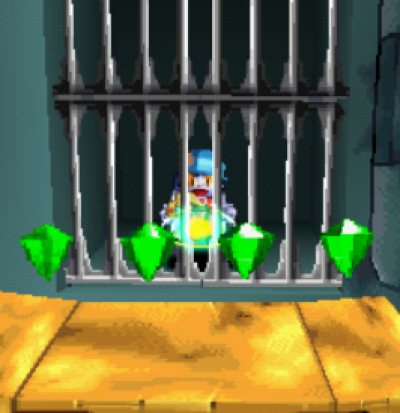
 Supporter
Supporter